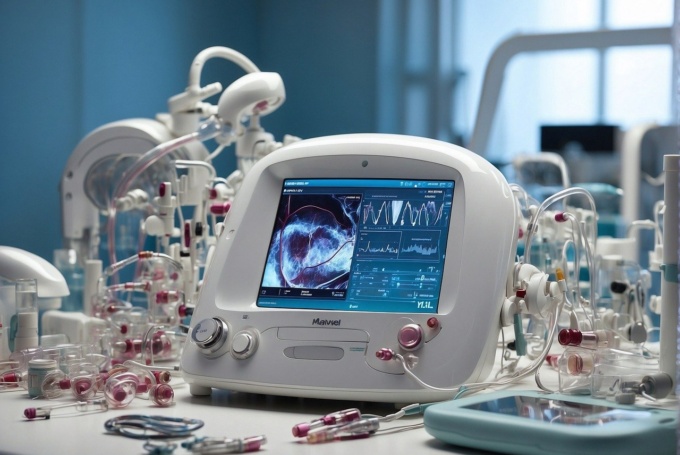3D printing is rapidly gaining prominence in the dental industry, with an expected growth rate of 25% by 2030 (GrandViewResearch). Its use in dental laboratories has enabled fast and customized production of models, night guards and denture fabrications, as well as orthodontic appliances like aligners and retainers. However, its potential in clinical settings remains unclear as the skills, time, and labor needed to manage production are significant barriers.
In this interview, we spoke with James Bonham, CEO of Voxel Dental Solutions, to find out his perspective on the fast-changing industry.
Thanks for taking the time for this interview today, James. Please introduce yourself to anyone that might not know of yourself or Voxel Dental.
My name is James Bonham. I have been in the dental technology world essentially for 20 years now. I have worked for a couple of big manufacturers within the first half of my career and then I would say over the last decade, I started my entrepreneurial journey.
I own a few different businesses. My first business was a 3D imaging centre, where we took 3D X rays and did implant planning and facial analysis for doctors back when cone beams were not very affordable. We started off with buying an ICAP when an ICAP was $300,000 or whatever, and then formed an imaging centre of doctors, with customers, surgeons, and stuff around us so that’s kind of where we started.
I sold that imaging centre a few years later, and then I acquired a dental lab. So, at that point in time, the labs were very analogue very, not very digital at all. So that was really that was step number one – to take this new lab that I had purchased and flip it to a digital lab and incorporate 3d printers and try to encourage our customers to have scanners and submit cases through intraoral scanning versus taking impressions. I had a really great time with that. Within a year we were acquired by a large lab , orthodontic lab in the space which was great for me because it just gave us you know, much bigger everything, we just had the ability to grow really, really fast.
Over the next four years, you know, I was essentially a partner but running the sales and marketing side of that lab and we doubled that lab over the next four years. And then that’s kind of when I made the decision, left the lab, sold my equity in the lab, and wanted to do something different. And that was back in the late 2016, early 2017. That’s when we started Voxel Dental. The whole idea between behind Voxel Dental was we wanted to help doctors bring those laboratory workflows in house. At that time, we saw that 3d printing was going into the desktop it was getting smaller it was getting more affordable, better workflows, easier to use. That’s kind of really the background. That’s how Voxel was started. And just with the idea of helping doctors bring these appliances, the appliance fabrication and dental workflows in house.
You have a big background in digital technology, which is obviously the reason for going into 3d printing. Since obviously, being in Voxel and creating this as a brand and a company, how do you feel that you compare and adapt to different companies that do similar things to yourself?
There’s not a lot of companies that do exactly what we do. Maybe one or two others that did that I would really consider some similar and I think they do a good job as well. But it’s not just selling equipment. I mean, we sell all digital equipment. That’s how we earn a living, right? But we try to do things a lot different. Selling equipment is what we do. That’s the benefit. That’s how we earn a living, but what we truly do is consult with clients consult with doctors and their staff and help them figure out what is that best path from analogue to digital.
There’s so many pieces to the puzzle. And how did all these puzzle pieces fit? You know, does this software or this piece of technology communicate with this one? And it’s about just pulling all the puzzle pieces together. We focus on selling multiple brands of each technology that we do sell. Because we always want to have a very objective approach with our clients and have the ability to give them a good better best option from what we lay out. But it starts with just asking a bunch of questions with our doctors and clients. And help try to understand where they are now, where they want to be, and what’s that schedule to get them to that point.
I’ve heard great things about Voxel throughout my time already in the industry. It’s a distributor that a lot of special 3d manufacturers want to work with. So how have you found since starting Voxel, it’s adapted and changed as the markets gone on? How have you grown as a company?
Owning a company like this, especially focused on the technology segment, everything I think that we’re going to be this year, every year it kind of blows my mind because we end up doing that, plus five other things.
We started Voxel, like I said in late November of 2016. And the whole idea was we’re going to be one of the very first, if not the first, 3d printer distributors, that focus on chairside. We’re not focusing on labs, we have the lab experience, but we’re focused on chairside and then it quickly turned into well, I had a background in 3d imaging with CBCT and running an imaging centre so quickly, cone beam and digital X ray came into play. And so really those were the two products that we started with. We were selling cone beams and we were selling 3d printers. And then it just evolved in ‘oh well we need an intraoral scanner.’ And so, let’s go evaluate all the scanners out there and pick a great partner or two.
I mean when you look at what we have today, if you asked me five years ago if Voxel would be a company that’s focused on robotics and automation, which is kind of the newest thing we’ve gotten involved into, I would have said ‘absolutely not that’s not where I think we’re going’ but, I think what I’ve learned is pay attention to the market, listen to your doctors, and understand what they’re looking for, what workflows they’re trying to accomplish. And then by doing that and listening, we then go seek the technologies that we can first learn and test and beat up and know everything that we can about that technology and then be able to bring that education and that piece of equipment that technology, you know, to the dental practice.
I thought we just started the company to sell 3d printers. And now that’s probably maybe only 15% of our business, and we sell a lot of 3d printers but it’s not what we it’s not the main part of our business. It’s just evolved into one piece of the puzzle to this entire digital workflow.
What is the focus or product that you’re working with?
I don’t think there’s a main focus as far as product category. I think the focus is what is the doctor needs. The main focus is digital workflow. You know, we started off as a 3d printer company. But over six, seven years, we’ve evolved into a full digital workflow company because I think that’s the biggest need in dentistry, is that your doctors are really, they want to do it but not many people truly have the energy to invest all the time to understand how all the pieces work together. And that’s where we come into play. You know, we say ‘hey, let us test it. Let us beat it out, beat it up’ and figure out what works well together. And then, you know, we make those recommendations to our clients.
Obviously, education is a huge part of that. And when we spoke previously, we discussed the education events that you’re starting to put on. Tell me more about them and how you feel like they compare to trade shows.
We only do a couple of trade shows a year. Which, you know, you look back 15 years ago, 20 years ago when I started the industry that’s that feels like that’s all we did. Trade shows are great still, but it’s just not where we decided to focus. We decided to focus on education. We currently do about 40 education events a year and as typically, you know, Friday, Saturday like weekend events, a lot of hands-on education events where it’s all hands-on training course where we’ve got 20/30 doctors.
We would rather do those type of events than go to a trade show where there’s 5/10,000 Doctors. Our style was to be more personal, more one on one. 70% of our business comes from referrals. You know, we’re not a company that advertises in markets a lot, but it’s because we do a lot of these educational events and develop those one-on-one relationships and, it’s just really kind of an old school approach, but we do a good job. Our expectation is that you’re going to appreciate it, you’re going to tell your friends, and that’s kind of that’s kind of how we build the company.
Word of mouth is by far the most useful tool you can use. Referrals, like you said, is the best way to go about doing business as great as marketing can be. There’s no better marketing than someone’s opinion and voice.
And I’ll add to that, I mean we were talking about education. We’ve gone so much as doubling down that we truly believe that education is the number one way we want to market right is through teaching. So, you know we do a lot of events where we’re travelling all over the country all over the world, actually.
We do three different events that we do, quarterly that are outside of the US. So, we go to, you know, Mexico, we go to Guatemala, we go to a few different places. But what we’ve really done this past year, and we built the state-of-the-art education Centre, here at Voxel. Right now, we’re hosting about one event every six weeks. We want to get that probably to every other to every third weekend, where we’re hosting an event here. We’ve got all the toys in the education room. So, every printer, every cone beam, every scanner, we’ve got a fully working chair with air and water and everything so we can do live surgeries, and everything gets casted on to the LED wall. So, you know, we spent a lot of time and energy and money in this educational centre here at Voxel.
It’s nice not to have to travel as much if we can bring more people here it’s great, but it’s also nice to have an event where the technologies that we’re talking about are on site, and we have the ability to do hands on training and teaching with that technology. So that’s kind of the focus and that’s, you know, we we’re a big believer in education and we’re putting our money where our mouth is, when it comes to education.
That’s great. You mentioned six weeks is the average time you’re hosting an event at the minute. Are you planning on bringing that down? Maybe one every two weeks? What are the plans?
One every two to every three weeks would be ideal. These first six months, we just kind of been working out the kinks. We even have the ability to live feed, we have five PTZ cameras throughout the space. We’ve got a full-time audio video guy on staff that handles everything.
But you know we can fit 40 doctors or 40 people comfortably in the in the education facility. But we can live feed to hundreds more that want to attend the educational event but can’t necessarily be on site. So, you know we’re doing our best to make it as a state-of-the-art centre that we can reach people all over the world.
It’s how we differentiate ourselves; we don’t necessarily just want to be selling a product we want to be teaching what that product does and how it can change your practice as a believer in education being the centrepiece.
I work mainly in the 3d print market, helping manufacturers, hiring their commercial teams, etc. Who do you think are the biggest competitors out there and who’s on the rise?
Desktop health has been a very, very strong formula envisiontec. They were a very strong brand and continue to do great things. We’re seeing a lot of new printers to the market to, you’ve got your lower cost LCD printers that are out there. We’re seeing some dentists use and even these low-cost hobby printers that are working, they have a little bit more, you need to be a tinker to go with printers like that.
But then there’s some other great brands that are coming onto the scene too. You look at what Lux Creo is doing from all their clear print strategies that they have from the full line of professional printers to aligner direct printer liner resins as well. So, there’s a lot of changes coming in the 3d printing space. And we’re super excited to be involved with all these companies and doing the best that we can to give them good feedback to help lean towards a direction that we’re all trying to get to which is the simplification of scanning designing and direct printing appliances and I’m really happy with where things are going and where these 3d printing companies are focused right now. We’re going to continue to see some amazing things about 3d printers and dentistry over the next few years.
How has 2023 been for you and what does the rest of the year look like?
We’re very blessed, we’ve been in a segment that is continuing to grow and, and I think, hopefully, we continue to make good decisions like we have been and continue to grow but as far as 2023 I know overall we have heard that the industry was down a little bit last year dentistry, and that things were down again for the first part of 2023 but like I said, we’ve been very blessed.
I mean, we’re 30% up again this year, just like we were last year so we’re continuing to grow. We’re spending a lot our time, energy money into finding new technologies that we can help bring to practices. Because we’re so focused on 3d printing and digital workflows, that is a segment that is growing right now. And so, we’re very blessed to be part of that growth. And I think we’re one of the major companies out there that are driving that growth, too. So, it’s fun to be a part of that.
Within Voxel, you have built a great team. Talk to me about your team, and what you provide to your customers.
Yeah, absolutely. Glad you asked that. Because I tell people all the time, we’re proud about things that we’ve accomplished in Voxel. The thing that I’m most proud about is the team that we put together. So, we have just a really, strong dynamic team of 20-year vets that are just the best of the best in the industry.
On one end, that seems to be half of our team. And the other half, seems to be a bunch of late 20s, early 30s guys that have been with us for five/ six years now. Some of them came out of the general lab space, but just the knowledge base that we have on the team. So, I’m very, very confident there’s not a single person that you can get on the phone at Voxel that’s not going to impress you. That’s not going to just know what they’re talking about.
We kind of have a policy here in the office, I would say 70/80% of the conversations that all of us have, we do on speakerphone. You know, I like that. I like that other people hear the conversations that we’re all having with doctors because we try to use it as a learning environment. And you know, we can take a young guy that’s just got a little bit of experience in dentistry, but you put him next to some of the other guys and we got a team full of digital badasses. So, you put him in that environment, and we can really accelerate the growth. And our is solid proof of that.
So, I think we’ve got a lot to offer our clients and again, that’s the thing that we’re most proud of is the relationships that we form with our clients and the knowledge that our team has.
So there you have it, a huge thank you to James for sharing his expertise. If you’re interested in this topic, I also recently caught up with April Newell from Nota3D to hear her thoughts on the growth of the market, which you can watch the recording on our blog page.
It’s indisputably a very exciting time for the dental space, with a host of revolutionary technologies coming into the market each year. With companies such as Carbon3D, SprintRay, Formlabs and Desktop Health already leading the way, it’s a privilege to hear from industry experts on the organisations to watch!
Interested in finding out more about our recruitment services? Book a consultation here.




